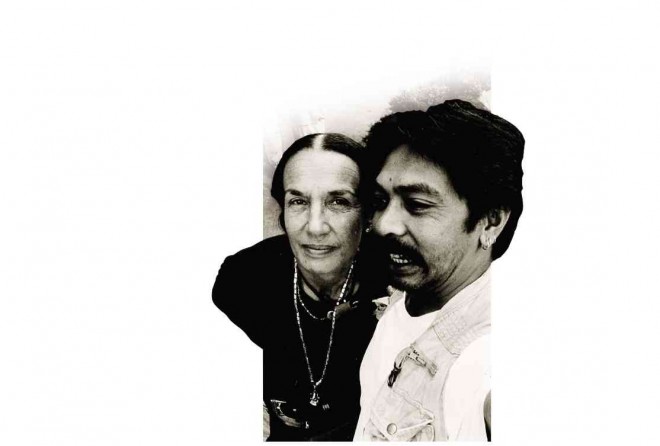When the great Mary Ellen made her Mark in Baguio
OF ALL the gin bulag joints in all the towns in all the world, you walked into mine,” was how Baguio City-based photographer Tommy Hafalla should have quoted Humphrey Bogart in the movie, “Casablanca,” when he first met another great photographer, Mary Ellen Mark, at Loakan Airport in 1996.
Mark, who recently died at the age of 75, was among the famous photographers who publisher Marina Mahathir tapped for the coffee table book, “Seven Days in the Philippines.” Mark chose to shoot Baguio.
So when photographer Wig Tysmans contacted Hafalla about it, the latter could only say, “Wow.”
But that “wow” had three footnotes. One, the most famous documentary photographer in the world was here and he’s meeting her. Two, she’s also a painter. Three, she was known to be a perfectionist.
Mark dealt mostly with large format shots. Everything should be perfectly lit (Hafalla was hired as a lighting assistant) and no subject was sacred to Mark, who was described as a “snake charmer of the soul.”
Article continues after this advertisementWhen Mark arrived, Hafalla noticed that half of the van she was using for the shoot was taken by her equipment. Hafalla noticed that she had about a dozen cameras, among these Hasselblad, Leica and Linhof with her name inscribed in them. Her lights came with their portable batteries which were heavy. Luckily she also brought an
Article continues after this advertisementassistant, a photography professor from University of Rochester who did the dirty job.
The first thing she asked Hafalla to do was bring her to the most notorious gin joint in town.
Hafalla took Mark to Abanao Road and luckily, a brawl ensued at a bar there. So Mark shot away at the bloodied face of the drunk Benguet cowboys. This was at 6 in the morning.
Then they drove beside the Baguio Central School and took photos of school girls. “I like the gradation of their expressions,” Mark would say later.
She also took a photo of a different set of girls at the Baguio market. Mark noticed they wore their Sunday best.
She asked about the subjects of Hafalla in the Cordillera and was told she had to hike a day to reach these villages.
So she did the next best thing. They went to the Baguio Botanical Garden and shot the “natives-for-a-fee” there. The problem, Hafalla said, was he had to stop traffic in front of the park and set some lights on the road.
“Well, Baguio drivers were more forgiving 20 years ago,” Hafalla said.
“Every day they come down from their mountain village to the city to be photographed in exchange for a few coins. They sell their exoticism, somehow,” Mark said in French to Vogue Paris, to whom she gave the photo.
Hafalla also set up weaver Narda Capuyan’s then 88-year-old mother, Irene Olat, for a shoot. The grand dame wore heirloom necklaces which were rare and expensive, Mark noted.
They then went to Brookside village to take a photo of bodybuilder Sammy
Ayochok, outside his gym and again on the sidewalk. Hafalla set up the lights and watched how Mark charmed Ayochok.
Mark said she heard of Ayochok, a Mr. Asia title holder, and contacted him. For the shoot, Ayochok was coated in oil and holding his baby, which, to Mark, made all the difference.
Mark was also an aspiring artist, Hafalla said. She received a Fine Arts degree in painting and art history from the University of Pennsylvania, in 1962. She later got her Master in Photojournalism and her artistry remained.
Hafalla said Mark took a photo of a Baguio faith healer in session. He said Mark, after taking a shot of the faith healer doing psychic surgery on someone, asked to become the patient. Hafalla, however, was not allowed to take photos.
Mark did not finish the week allotted to her in Baguio. But it was more than enough. The “snake charmer” thought the Baguio people were shy and elusive. She then went to cover the Masskara Festival in Bacolod City, a place she recalled was a contrast to Baguio.
Hafalla said one thing he learned in that brush with Mark was the need for previsualization.
“Before you take the picture, you have already anticipated the picture in your mind. It’s not posed. It’s like starting to paint with the picture in your head,” he said.
